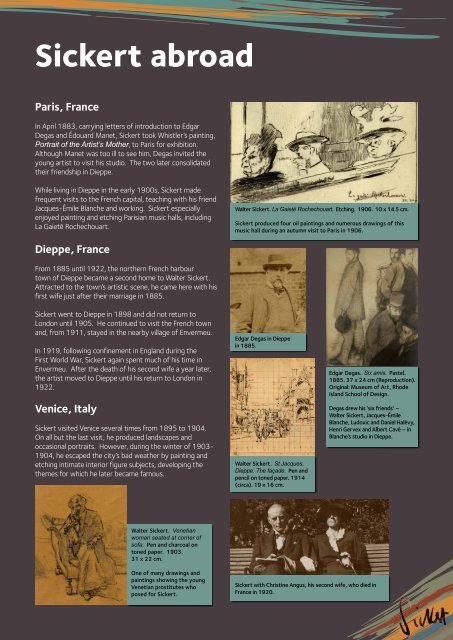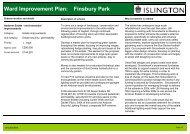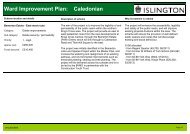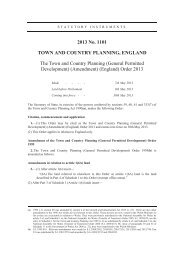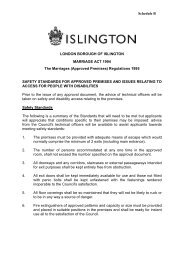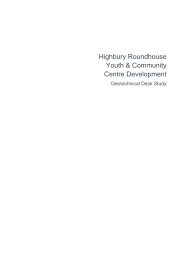Create successful ePaper yourself
Turn your PDF publications into a flip-book with our unique Google optimized e-Paper software.
<strong>Sickert</strong> abroad<br />
Paris, France<br />
In April 1883, carrying letters of introduction to Edgar<br />
Degas and Édouard Manet, <strong>Sickert</strong> took Whistler’s painting,<br />
Portrait of the Artist’s Mother, to Paris for exhibition.<br />
Although Manet was too ill to see him, Degas invited the<br />
young artist to visit his studio. The two later consolidated<br />
their friendship in Dieppe.<br />
While living in Dieppe in the early 1900s, <strong>Sickert</strong> made<br />
frequent visits to the French capital, teaching with his friend<br />
Jacques-Émile Blanche and working. <strong>Sickert</strong> especially<br />
enjoyed painting and etching Parisian music halls, including<br />
La Gaieté Rochechouart.<br />
Dieppe, France<br />
From 1885 until 1922, the northern French harbour<br />
town of Dieppe became a second home to <strong>Walter</strong> <strong>Sickert</strong>.<br />
Attracted to the town’s artistic scene, he came here with his<br />
first wife just after their marriage in 1885.<br />
<strong>Sickert</strong> went to Dieppe in 1898 and did not return to<br />
London until 1905. He continued to visit the French town<br />
and, from 1911, stayed in the nearby village of Envermeu.<br />
In 1919, following confinement in England during the<br />
First World War, <strong>Sickert</strong> again spent much of his time in<br />
Envermeu. After the death of his second wife a year later,<br />
the artist moved to Dieppe until his return to London in<br />
1922.<br />
Venice, Italy<br />
<strong>Sickert</strong> visited Venice several times from 1895 to 1904.<br />
On all but the last visit, he produced landscapes and<br />
occasional portraits. However, during the winter of 1903-<br />
1904, he escaped the city’s bad weather by painting and<br />
etching intimate interior figure subjects, developing the<br />
themes for which he later became famous.<br />
<strong>Walter</strong> <strong>Sickert</strong>. Venetian<br />
woman seated at corner of<br />
sofa. Pen and charcoal on<br />
toned paper. 1903.<br />
31 x 22 cm.<br />
One of many drawings and<br />
paintings showing the young<br />
Venetian prostitutes who<br />
posed for <strong>Sickert</strong>.<br />
<strong>Walter</strong> <strong>Sickert</strong>. La Gaieté Rochechouart. Etching. 1906. 10 x 14.5 cm.<br />
<strong>Sickert</strong> produced four oil paintings and numerous drawings of this<br />
music hall during an autumn visit to Paris in 1906.<br />
Edgar Degas in Dieppe<br />
in 1885.<br />
<strong>Walter</strong> <strong>Sickert</strong>. St Jacques,<br />
Dieppe. The façade. Pen and<br />
pencil on toned paper. 1914<br />
(circa). 19 x 16 cm.<br />
Edgar Degas. Six amis. Pastel.<br />
1885. 37 x 24 cm (Reproduction).<br />
Original: Museum of Art, Rhode<br />
Island School of Design.<br />
Degas drew his ‘six friends’ –<br />
<strong>Walter</strong> <strong>Sickert</strong>, Jacques-Émile<br />
Blanche, Ludovic and Daniel Halévy,<br />
Henri Gervex and Albert Cavé – in<br />
Blanche’s studio in Dieppe.<br />
<strong>Sickert</strong> with Christine Angus, his second wife, who died in<br />
France in 1920.


